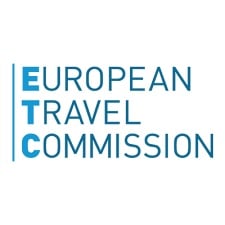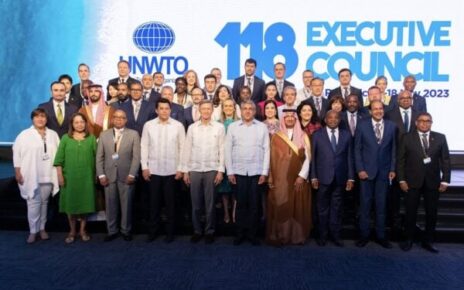According to a report released by the European Tourism Commission European Travel Commission (ETC), tourism in Europe continues to regain lost ground during the pandemic.
Foreign tourist arrivals to Europe now sit 18% below 2019 levels for the full-year 2022. Despite concerns about increasing living costs, consumers refused to cut back on travel, particularly over the year’s second half. Inflation peaked in the Eurozone1 and has since been slowing; however, it remains high, adding more pressure on households.
The risks of recession and gas shortages have dissipated while falling energy prices and stable labor market developments in the EU3 will also sustain European tourism in 2023.
The challenges from 2022, however, are expected to spill into 2023 in terms of elevated food and jet fuel prices, higher operating costs for airlines and hospitality establishments, and risks and uncertainty around Russia’s war against Ukraine. European tourism demand has entered 2023 on a firm footing.
Year-to-date data indicates that almost one-third of reporting destinations have surpassed 2019 levels of tourist arrivals, while one-fourth is just 10% below. In arrival terms, Serbia (32%) and Türkiye (21%) outperformed, benefitting mostly from the influx of Russian travelers taking advantage of the visa-free regime in both countries. In contrast, the absence of Russian tourists is mostly felt in Finland (-22%) and the Baltic states.
Bulgaria also saw a strong performance (+27%), which, alongside Türkiye, benefits from its position as the best-value holiday destination in times of rising travel costs.
Commenting following the report’s publication, Luís Araújo, ETC’s President, said:
“It is encouraging to see healthy recovery levels as we hurtle towards the summer peak season. However, many challenges still hinder the travel industry. From battling inflation to dealing with the fallout from the war in Ukraine, the travel industry is full at the moment.
Nonetheless, we must also focus on tackling longer-term challenges. To preserve the sector for future generations, tourism businesses, policymakers, and destinations must strengthen their efforts to encourage responsible tourism practices, minimize negative impacts on the environment and create positive impacts on the wellbeing of our populations.”
Ukraine War Fallout Continues to Impact Markets
A year on from the Russian invasion of Ukraine, the war and its geopolitical consequences weigh on the travel industry and the recovery of some European destinations.
Travel restrictions on Russian arrivals continue to redirect travel flows to other destinations across Europe. Türkiye, for instance, has seen a strong influx of Russian visitors, ranking as the most popular destination for this market so far this year. As one of the few destinations in Europe that do not have sanctions in place, Türkiye is garnering the benefits of a reduced selection of destinations for Russian travelers.
In contrast, the absence of Russian travel has been a factor slowing down tourism recovery in some Northern and Eastern European destinations. This has mostly been felt in Finland and the Baltic states. Some Eastern European countries are also being impacted by perceptions that they are closer to the conflict zone than they are. Krakow, Budapest, and Riga are all cities reporting visitors showing hesitancy due to the war in Ukraine.
Britons Brave Travel Disruptions
The most recent data suggests that two in five reporting countries have surpassed 2019 levels of British tourist arrivals. Whilst the cost-of-living crisis is not deterring Brits from traveling, it is causing price-sensitive travelers to choose more cost-effective travel alternatives. Türkiye saw the fastest growth in British tourist arrivals, up 69% compared to 2019, helped by the declining value of the Turkish lira over major currencies, including the sterling. Croatia (64%) and Montenegro (54%) also attracted sizable numbers of British arrivals.
The rapid recovery of UK travel demand is predicted to continue to pressure Britain’s airports, ports, and railways as they try to meet demand and minimize delays. Indeed, over Easter, Britons were challenged by travel chaos at UK ports and airports brought on by strikes, understaffing, delays, and more thorough post-Brexit border controls. Industry experts predict that summer 2023 could see a similar level of disruption to summer 2022.
Click here to download the ETC report.
ETC MEMBER ORGANISATIONS
Austria – Austrian National Tourist Office (ANTO)
Belgium: Flanders – Visit Flanders, Wallonia – Wallonie-Belgique Tourisme Bulgaria – Bulgarian Ministry of Tourism
Croatia – Croatian National Tourist Board (CNTB)
Cyprus – Deputy Ministry of Tourism, Republic of Cyprus
Czech Republic – CzechTourism
Denmark – VisitDenmark
Estonia – Estonian Tourist Board – Enterprise Estonia
Finland – Business Finland Oy, Visit Finland
France – Atout France
Germany – German National Tourist Board (GNTB)
Greece – Greek National Tourism Organisation (GNTO)
Hungary – Hungarian Tourism Agency Ltd.
Iceland – Icelandic Tourist Board
Ireland – Fáilte Ireland and Tourism Ireland Ltd.
Italy – Agenzia Nazionale del Turismo (ENIT)
Latvia – Investment and Development Agency of Latvia (LIAA)
Lithuania – Ministry of the Economy and Innovation, Tourism Policy Division Luxembourg – Luxembourg for Tourism (LFT)
Malta – Malta Tourism Authority (MTA)
Monaco – Monaco Government Tourist and Convention Office Montenegro – National Tourism Organisation of Montenegro Netherlands – NBTC Holland Marketing
Norway – Innovation Norway
Poland – Polish Tourism Organisation (PTO)
Portugal – Turismo de Portugal, I.P.
Romania – Romanian Ministry of Economy, Entrepreneurship and Tourism San Marino – State Office for Tourism
Serbia – National Tourism Organisation of Serbia (NTOS)
Slovakia – Slovakia Travel
Slovenia – Slovenian Tourist Board
Spain – Turespaña – Instituto de Turismo de España
Switzerland – Switzerland Tourism
Ukraine – State Agency for Tourism Development of Ukraine (SATD)
Register free for IMEX Frankfurt May 23-25 AND click here to schedule your FREE Photo / Video Interview with eTurboNews during IMEX




